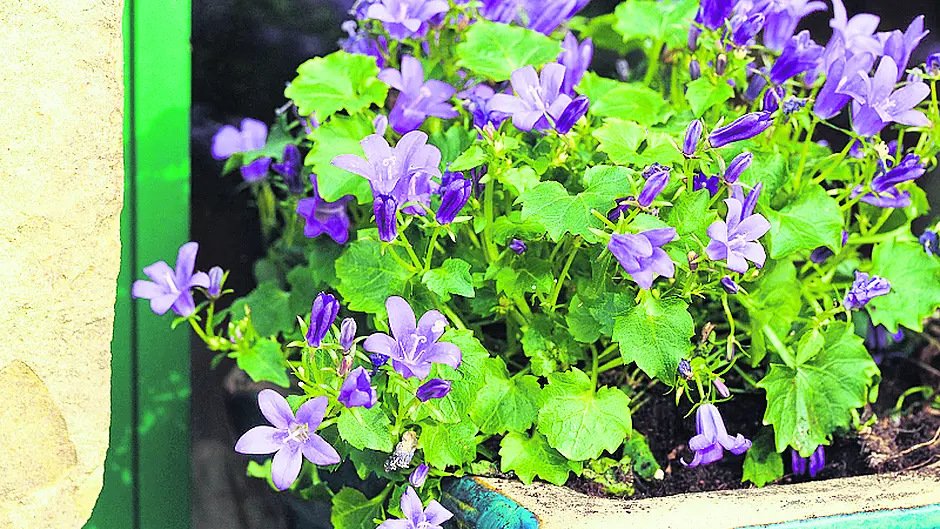Things certainly seem to have kicked off in the garden over the last couple of weeks
Gardening with Joyce Russell
Things certainly seem to have kicked off in the garden over the last couple of weeks. There’s no stopping growth once it has started and lots of border plants are on their way up. Rhubarb is producing some long stalks too and early ornamental plum and cherry trees are in full flower. It’s lovely to see all that fresh young growth and with it the promise of things to come.
Containers of all descriptions can be used to provide the first splashes of colour around the house. This is a good time to take down window boxes and baskets and sort them out. Some plants may have survived the winter, but it’s worth checking these over and cutting out any dead or discoloured stems. Cut back to a small healthy bud, if you can spot one, and this should grow out to produce new healthy growth.
Some over-wintered plants may be past their best and this is a good time to start again. Empty out the old compost and refill with fresh. This will be full of the nutrients needed for about two months of growing and after that you can use a feed every couple of weeks. There are already some colourful and dainty flowering plants that are suitable for containers in garden shops. There are also bright and bold ones for those that like to make a splash.
Remember that plantings can change as the seasons move on – it doesn’t take much to have some year-round colour in those window boxes and pots.
Cloches and frames
These are really useful aids to extending the growing season at both ends of the year. You can get earlier crops with the extra protection and plants aren’t battered by rain and wind. Cloches and frames can be used for raising young plants, or for hardening off ones that are moving between the greenhouse and the garden outdoors. They are also useful for tender plants that need a little more warmth than the weather might provide on its own.
Whatever way you use them, there is a small bit of work involved. You will need to water plants in a covered environment unless there is adequate moisture drawn in from surrounding soil. Keep an eye out for slugs and snails and use your best organic controls. These pests can hide under weighted edges of polythene or in against the sides of a frame.
Plants can also suffer from high temperatures in an unventilated cloche on a bright sunny day. Open up each end of a cloche for a start so air can pass through, or throw back the cover completely if the days are warm enough. Early broad beans and peas will soon outgrow a cloche anyway: they will need some taller supports and plants must be hardened off so they can grow strongly after the covering is removed.
It’s worth putting the cover back for frosty nights if you can. If this isn’t possible then water the rows of frosted peas and beans with cool, but not cold, water before the sun thaws them out.
Prop the lid of a frame open for ventilation during the day and close it back down at night again. Move to leaving the lid propped by night then open the frame altogether while still leaving the shelter of walls to play their part. This is a good way to harden off beetroot, leeks, lettuce, sweet peas etc that have been raised in trays. The plants are essentially hardy, but they need to get used to a cooler and more exposed growing place.
Sowing seeds
I think of March as the sowing month. So many seeds can be started over the next few weeks whether they go straight into a bed in the garden, into the greenhouse border, or in pots in a propagator.
• Tomatoes, peppers, melons and cucumbers can all be started now at 20C. Seedlings pop up fast so start several in one pot and prick them out to individual pots when they have two seed leaves.
• Start a courgette or two with a little heat. 15C is warm enough and this can be maintained on a window ledge if you don’t have a propagator.
• Salad leaves, like rocket and mustard, do best if sown directly in drills where they are to grow. Lettuce is best started in pots and planted out 15cm apart in rows: this gives a few spare to replant if any are devoured by slugs.
• Peas, beans and early varieties of beetroot can go straight into the ground too. The soil should be warm enough in an average year, but you can use a cloche, or lay some horticultural fleece over the rows if temperature is a concern.
• Sow Brussels sprouts in pots now if you want to pick your own in late autumn and winter.







